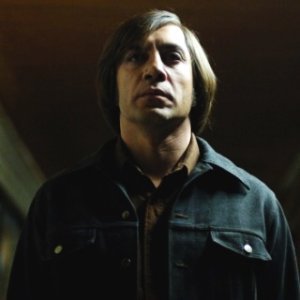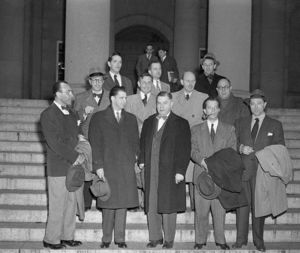With the end of the ’00s only a few days away I, as a writer who sometimes finds a minute to make a comment or two about the movies, am legally obligated to assemble a list of my choices for the best films of the past ten years. Since I don’t have to actually go to prison to know it just wouldn’t agree with me, I will obey. But – ’cause I’m just contrary like that – I’m not ranking the list. The hell with that, since it only serves to make something that’s 100% my opinion in the first place even more arbitrary and meaningless.
Following, with brief comments for each item, is my chronologically ordered list of the ten best dramatic films released since January 1, 2000. The comedy list is coming very soon, too, so watch for that’n. On with it now:
Requiem for a Dream (U.S. release: October 6, 2000) – This adaptation of Hubert Selby’s novel is so confident and surefooted that it’s a little startling to look back and realize it was only Darren Aronofsky’s second feature as a director. Featuring great performances from both the expected (Ellen Burstyn, Jennifer Connelly) and the surprising (Marlon Wayans), Requiem is the best “drug movie” ever made because it is so much more than just a drug movie – it is a movie about addiction itself, and the destructive power of dreaming unattainable dreams. It was one of the first great films of the decade, and ten years later it’s still devastating and unforgettable.
Crouching Tiger, Hidden Dragon (U.S. release: December 22, 2000) – A decade of imitators and wannabes has done nothing to diminish the accomplishment of Ang Lee’s mainstream breakthrough. Though he helmed a handful of excellent films prior to Crouching Tiger (among them The Wedding Banquet, Eat Drink Man Woman, and The Ice Storm), it was here that Lee proved himself not only as a nimble and creative director of action sequences, but also as one of the great humanists of today’s cinema. Part martial arts epic, part fairy tale, part love story, Crouching Tiger elicits thrills, tears, and wonder without ever seeming to try. It’s that rarest of birds, especially nowadays: a genuinely beautiful film.
Elephant (U.S. release: October 24, 2003) – After almost a decade in mainstream films (Good Will Hunting, Psycho, Finding Forrester), Gus Van Sant returned to his independent roots with his Death Trilogy. All three entries are superb (2002’s Gerry and 2005’s Last Days are the other two), but it’s Elephant, the trilogy’s middle episode, that lingers longest. It shows us the events of an ordinary morning from the perspective of several suburban teenagers, all of whom attend the same high school. There’s John, the floppy-haired son of an affable drunk; Elias, the aspiring photographer; Nathan, the star athlete, and Carrie, his popular girlfriend; Michelle, the shy, awkward girl who works in the school library; and Alex and Eric, the two friends who plan and eventually carry out a Columbine-style killing spree. As director, Van Sant employs the lightest touch imaginable, simply following his characters around in long tracking shots, showing events multiple times from different perspectives, moving backward and forward in time to examine the lead-up to the shooting in exacting detail. Elephant is not a thriller, and though it’s certainly scary, it is not a horror movie. It doesn’t judge the boys as they murder their peers, nor does it argue in their favor. It takes its time in telling us a simple and deeply sad story, one that will stay with you long after the last credit has scrolled.
Brokeback Mountain (U.S. release: December 9, 2005) – It was a good decade for Ang Lee, who, besides his two films on this list, also directed the misunderstood and underrated Hulk, and the acclaimed Lust, Caution. Stung by the critical and popular rejection of Hulk in 2003, Lee came back swinging in 2005 with Brokeback Mountain, a movie that has outlasted its status as an inescapable pop culture punchline and looks well positioned to stand the test of time. At its heart, it is a classic doomed love story – Romeo and Juliet with cowboys, you might say. Heath Ledger and Jake Gyllenhaal star as a couple of down-on-their-luck cowpokes who take work watching a flock of sheep up on the titular Wyoming mountain, begin a sexual affair, and eventually fall in love. Lee, working from a screenplay by Larry McMurtry and Diana Ossana that adapts and expands Annie Proulx’s original short story, doesn’t flinch from the sex or the tragedy, creates a movie that wrenches but never preaches.
Bubble (U.S. release: January 27, 2006) – Steven Soderbergh had a pretty good decade his own self, making films that earned both critical acclaim (Traffic, The Good German, The Informant!) and heaps of cash (his trio of Ocean’s movies starring George Clooney and a cast of a thousand stars). But for my money, his best work of the ’00s is this low-budget gem about life and death among a group of employees at a doll factory in rural Ohio. The cast is comprised entirely of non-professional actors recruited from the local area, and the action is improvised – no script was written, only a scenario to guide the characters generally through the plot. Bubble was shot on digital video, photographed and edited by Soderbergh himself, and released simultaneously to theaters and cable TV network HDNet, with a DVD release following a few days later. That model for distributing films hasn’t really caught on, but Bubble remains a fascinating and impressive example of what a gifted filmmaker can do with a good story and a minimum of resources. And dig the scenes featuring a real-life cop as the detective investigating a murder. They’re like no movie interrogations you’ve ever seen.
United 93 (U.S. release: April 28, 2006) – Arriving in theaters four months before the melodramatic and manipulative World Trade Center, Paul Greengrass’s United 93 feels like the best film that could possibly have been made about the terrorist attacks the morning of September 11, 2001. Focusing exclusively on the events aboard the fourth hijacked plane (pieced together through phone calls made by passengers and crew, and a lot of careful speculation), the film isn’t so much reverent as stoic, dramatizing the hijacking and crash of Flight 93 in a straightforward style, shot with handheld cameras, allowed to play out more or less in real time, and featuring a cast of anonymous characters, and dialogue improvised by the actors. It’d be a good enough film to give you a lump in your throat and a rock in your stomach even if it wasn’t based on the greatest true-life tragedy of our time.
The Lives of Others (U.S. release: February 9, 2007) – What a subtle, surprising film this one is. It sneaks up on you, tricks you, plays at being a political thriller before revealing itself as a great work of humanism. The feature debut of writer/director Florian Henckel von Donnersmarck, The Lives of Others tells the story of a playwright and his actress girlfriend living in the Communist state of East Germany during the 1980s. Unbeknownst to them, the writer and his lover are the subject of constant surveillance by the Stasi, the East German secret police, conducted by Gerd Wiesler, a loyal Stasi officer who idealistically believes in the greatness of the socialist state. But his surveillance of the writer and the actress changes Wiesler. The most rewarding gift of the film, and of Ulrich Mühe’s amazing performance as Wiesler, is that we are not aware of the change – it simply happens, before our eyes, before we can even realize what is happening. It’s that mastery of understatement by both actor and filmmaker, along with the vivid representation of life under the paranoid, claustrophobic East German state, that makes this one of the best films of this, or any decade.
Away From Her (U.S. release: May 4, 2007) – Sarah Polley’s adaptation of Alice Munro’s short story “The Bear Came Over the Mountain,” her first feature as a writer and director, manages the rare trick of being both sorrowful and reassuring as it tells the story of a married couple in their retirement years dealing with the wife’s advancing Alzheimer’s disease. Turning on two extraordinary performances by Julie Christie and Gorden Pinsent, Polley’s film is never maudlin or cloying. Like Munro’s story, it gives us a glimpse of imperfect people doing their best in an impossible situation, and ends not with tragedy, but with bittersweet yearning, and an affirmation of love. It’s an exquisite piece of cinema.
No Country for Old Men (U.S. release: November 9, 2007) – This, Joel and Ethan Coen’s adaptation of Cormack McCarthy’s novel, is the only film on the list to win the Best Picture Oscar. But it’s more than that. It’s the only Best Picture winner to have actually been the best film of its year. And greater still, it’s one of the best Best Pictures ever. Like Crouching Tiger, Requiem for a Dream, and other films on this list, No Country defies categorization. You could call it a thriller, or a western, but it transcends both of those genres to become something more universal. It is filled with great actors giving great performances – Tommy Lee Jones, Josh Brolin, Kelly MacDonald, Woody Harrelson – none greater than Javier Bardem’s turn as assassin/bounty hunter Anton Chigurh. Quirky, coldly calculating, and seemingly unstoppable, Bardem’s Chigurh makes Heath Ledger’s Joker (himself no small triumph) look like an impotent cartoon by comparison. Chigurh is the scariest, most compelling villain America cinema has yet seen, simultaneously mythic and authentic, just like the film itself.
There Will Be Blood (U.S. release: December 26, 2007) – For many, including me, the attraction of this film is as elusive as Daniel Plainview, its volatile, ultimately unknowable central character. Paul Thomas Anderson’s There Will Be Blood, freely adapted from Oil!, a 1927 novel by Upton Sinclair, is many things. It’s an epic, a period piece, a character study, a tragedy, and finally . . . a slapstick comedy? The much talked-about final scene is somehow all of those at the same time, and all the more extraordinary for it. As Plainview, the miner turned oil tycoon, Daniel Day-Lewis gives one of the great performances – theatrical yet measured, grandiose yet carefully studied. His relentless pursuit of wealth eventually attains biblical proportions, as does his decades-long conflict with farmer turned revivalist preacher Eli Sunday (terrifically played by Paul Dano), the latter culminating in that cruel, blackly funny finale which casts Plainview as both hero and villain, prophet and lunatic, and finally delivers on the promise of the title in the grimmest, most literal way possible.






